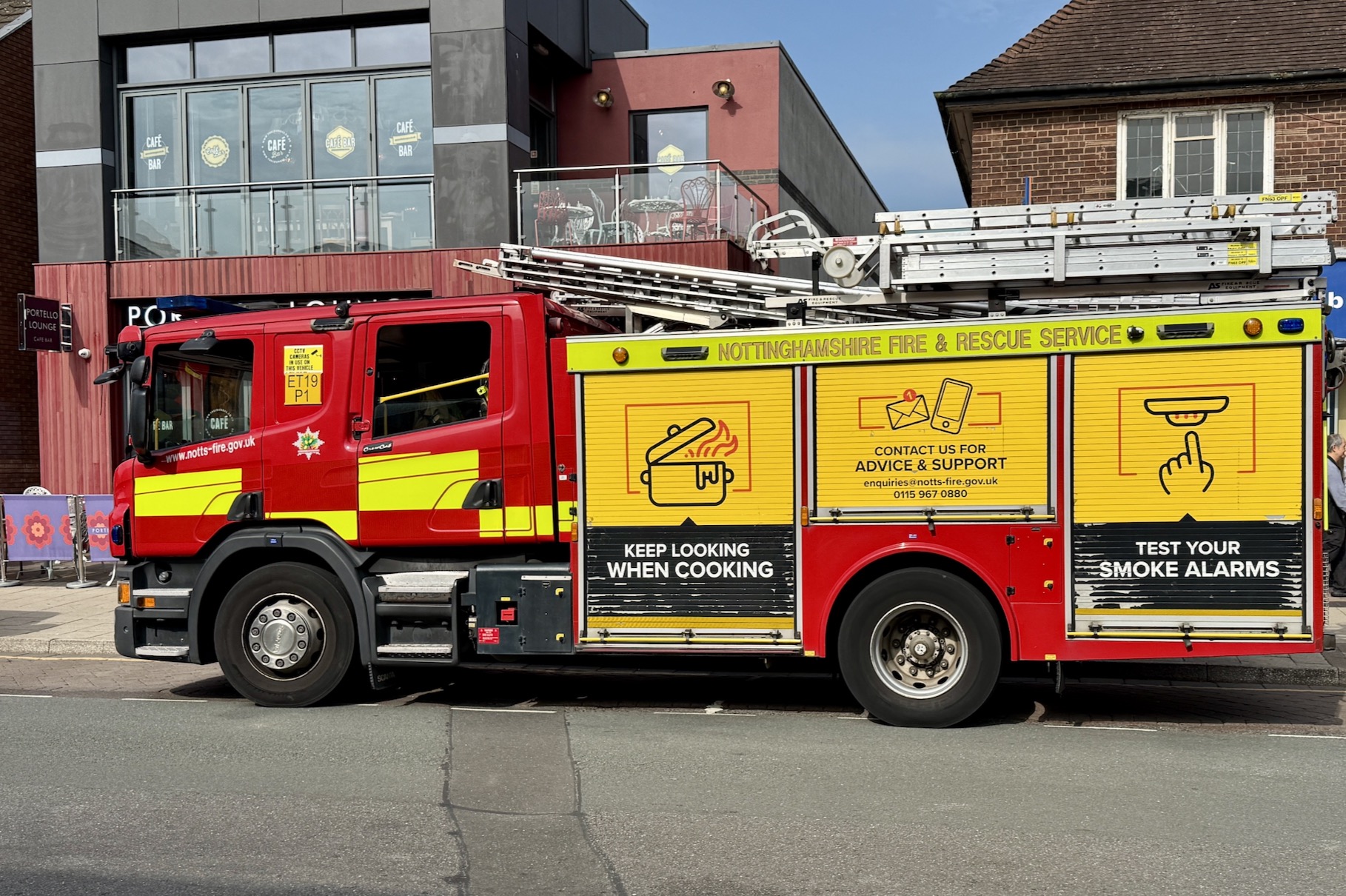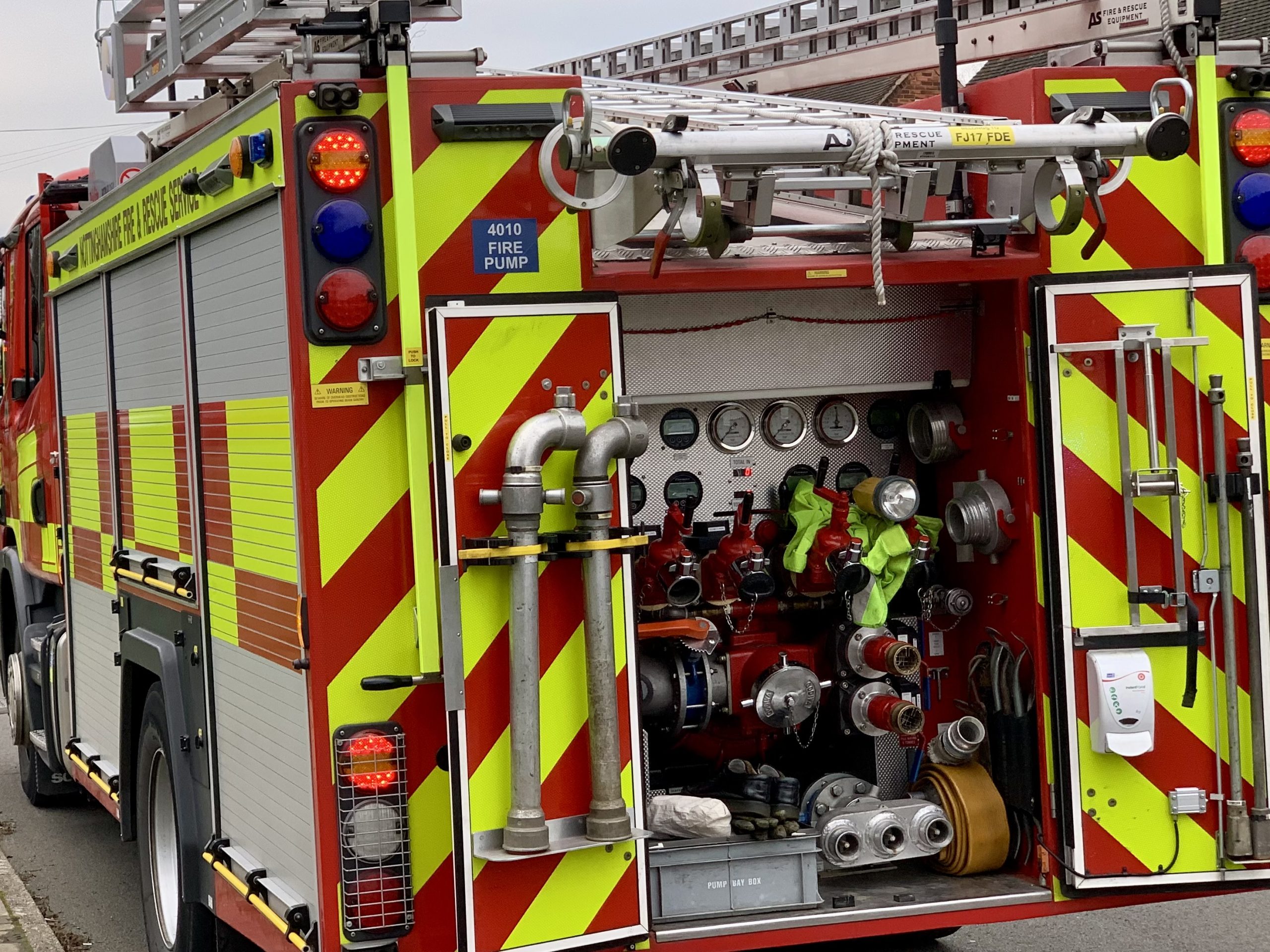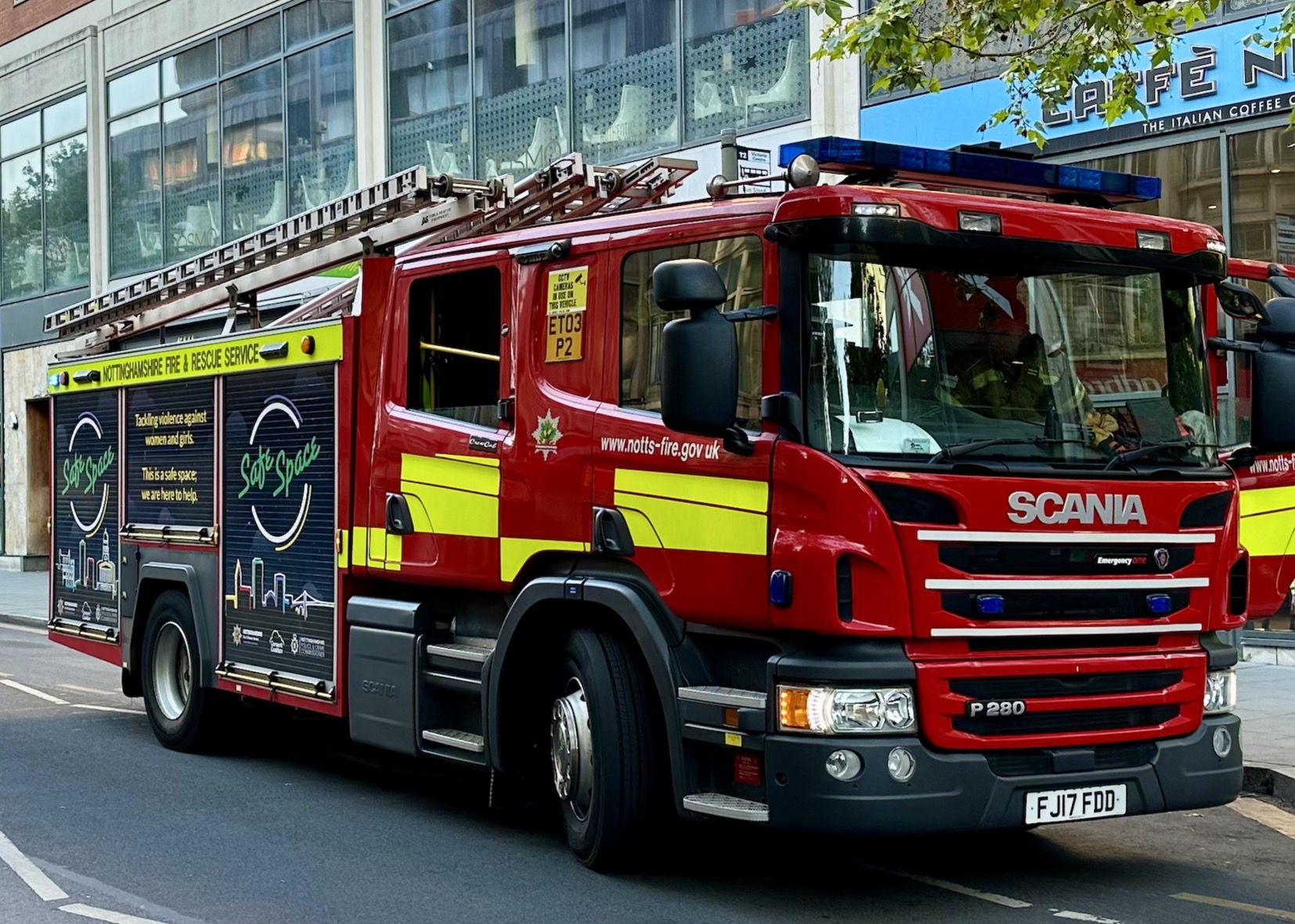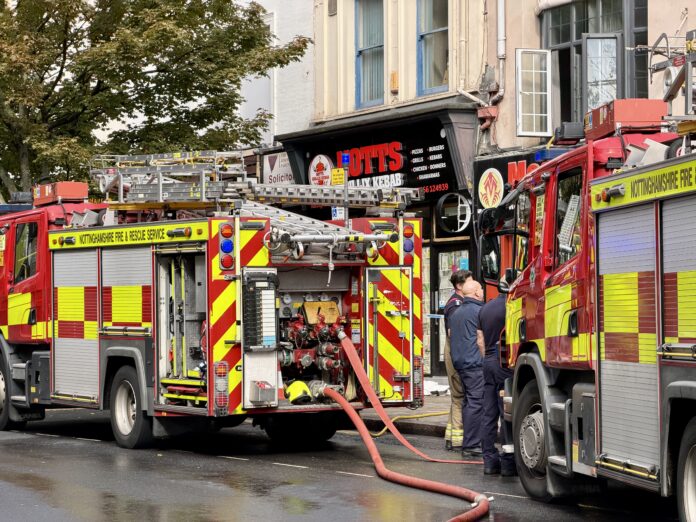Nottinghamshire Fire and Rescue Service has reported a sharp rise in demand across its emergency response functions in the first quarter of 2025/26, according to a performance update due to be scrutinised by members of the Fire Authority on 10 October.
Between April and June 2025, the Service attended 3,320 incidents, a 24.8 per cent increase compared with the same period in the previous year.
If this trend continues, more than 13,500 incidents could be recorded by year end – the highest total in over a decade.
The increase has been driven primarily by fire-related incidents, which have risen by over 77 per cent. Deliberate fires have almost doubled compared with last year, while accidental fires have increased by more than 60 per cent, a trend attributed in part to the hot, dry spring. Special service calls rose by 7.8 per cent, and false alarms by 2.7 per cent. For the first time since the 2022 summer heatwave, the number of fires in April outstripped false alarms.

The City of Nottingham accounted for the largest number of incidents, with 898 in Q1, while Rushcliffe saw the lowest at 246. Analysis of incident priority types shows that the most significant rise has been in lower-risk P3 incidents, which increased by almost 30 per cent. Higher-risk P1 and P2 incidents increased more modestly, by 10 per cent and 5.3 per cent respectively.

Despite pressures, Nottinghamshire Fire and Rescue Service has maintained strong levels of response. Its target for attending emergencies is an average of eight minutes from mobilisation, but in Q1 the figure rose to eight minutes and 23 seconds. This increase has been linked to the greater volume and geographical spread of P3 fires, which meant appliances were often dispatched beyond their usual turnout areas.

File image
Operational performance has otherwise been strong. Wholetime crews mobilised quicker than their target, while On Call crews improved their average turnout time compared with last year. On Call availability stood at 84.2 per cent – below the Service’s 85 per cent target, but above the national average of 72 per cent.
The Service expects availability to return to target levels in 2025/26 following new contract options and ongoing recruitment.

File image
Wholetime appliances were available 98.3 per cent of the time, and specialist vehicles such as aerial ladder platforms were available 99.6 per cent of the time. Joint Control, which handles 999 calls for Nottinghamshire and Derbyshire, performed strongly: 96.6 per cent of calls were answered within seven seconds, average handling time was well inside target at 67 seconds, and mobilisation system availability was recorded at 99.5 per cent.
Prevention work has also remained on target. More than 4,100 safe and well visits were carried out between April and June, nearly half of them to residents aged over 65, and over half to people identifying as disabled.

© westbridgfordwire.com 2024
Nottinghamshire continues to exceed the national average in this area, carrying out 12.8 visits per 1,000 population compared with an England-wide figure of 10.
Community engagement during the period included fire safety campaigns in schools, targeted outreach to vulnerable groups, attendance at cultural events such as Vaisakhi and the Newark County Show, and partnership work on road and water safety. Fire investigation targets were also exceeded, with 100 per cent of coroner’s reports completed on time.

On the protection side, the Service faces challenges in meeting its fire safety audit target. While the annual commitment is 1,500 audits, the Service completed 289 in Q1, which would equate to just over 1,100 by year end. This reflects an unprecedented workload of 10 open investigations, many expected to lead to prosecution, which has diverted resources.

File image
The Service has therefore revised its target down to 1,100 audits, focusing on high-risk premises in line with its Risk Based Inspection Programme. Even so, Nottinghamshire continues to perform significantly above the national average, carrying out 8.5 audits per 100 premises compared with two per 100 nationally. Business safety checks rose by 41 per cent year on year, with 431 completed in Q1, and nearly three dozen premises identified as “poor” and requiring further intervention.

False alarms continue to place a strain on resources, with 1,248 recorded in Q1, including 720 unwanted fire signals, the majority from residential premises and a significant proportion from hospitals. The Service has a staged process of education and enforcement for repeat offenders, and is developing new strategies to reduce such incidents in line with its Community Risk Management Plan.

• Nottinghamshire Fire Service: Over 5,000 false alarms attended in a year
Nottinghamshire Fire and Rescue Service also continues to play a key role in national building safety reforms. Under the Building Safety Act 2022, the Building Safety Regulator became the building control authority for higher-risk buildings in 2024, and NFRS has contributed a Fire Safety Inspector to the East Midlands multi-disciplinary team. Recent work has included building safety case reviews, Gateway 2 applications and building assessment certificates. Alongside this, the Service is working with the East Midlands Combined County Authority on remediation acceleration plans for unsafe cladding, following government commitments to address all 18m+ high-risk buildings by 2029.








